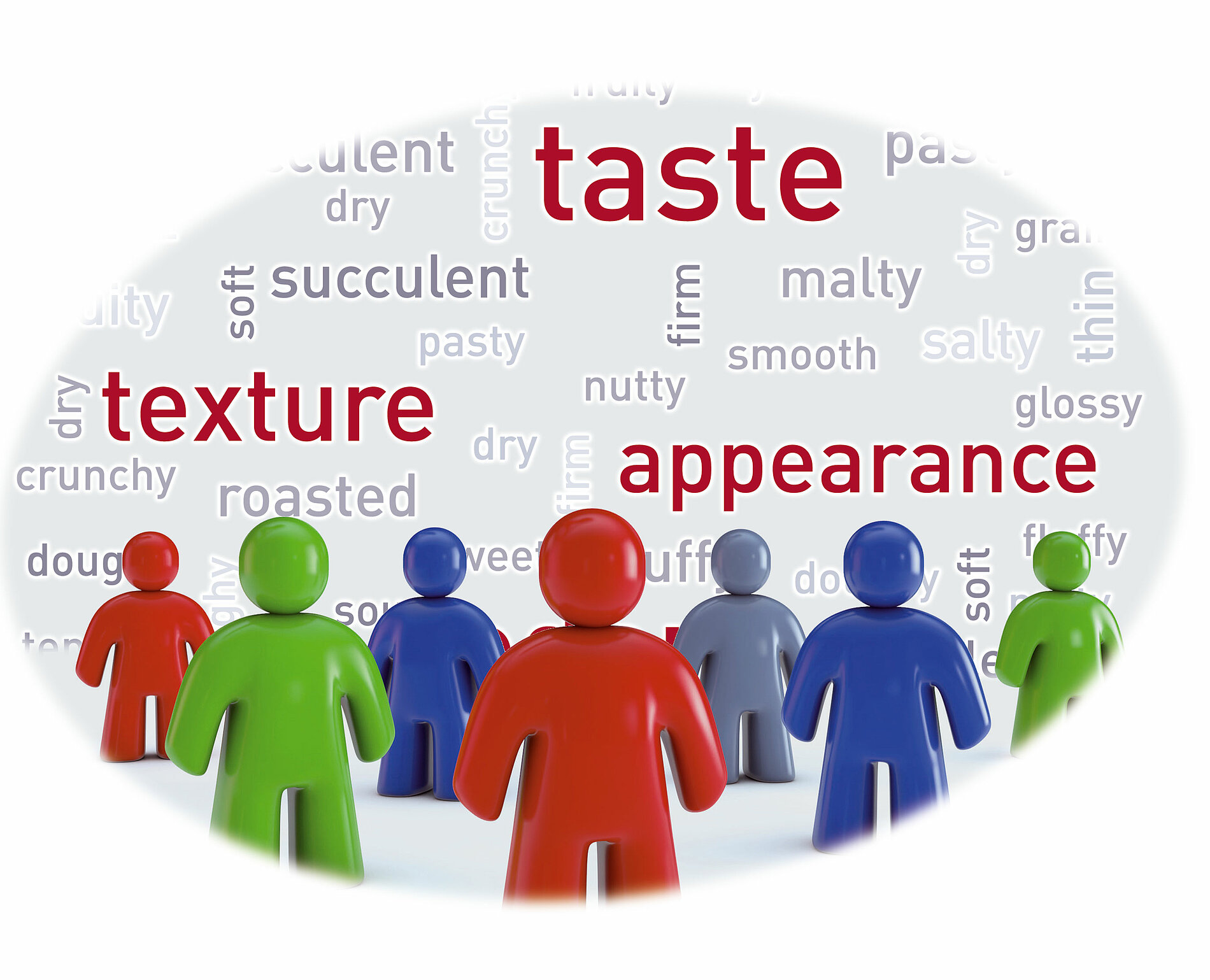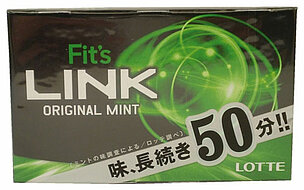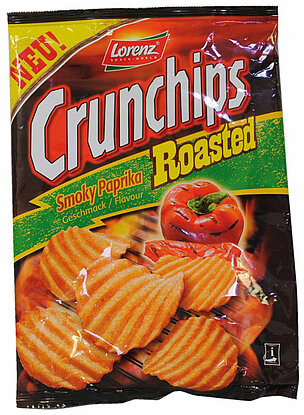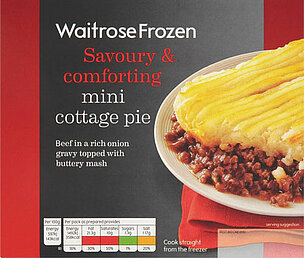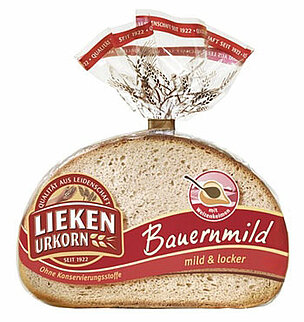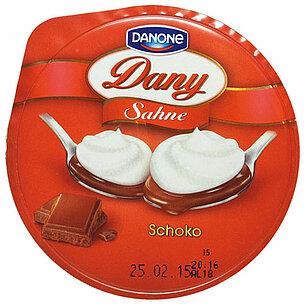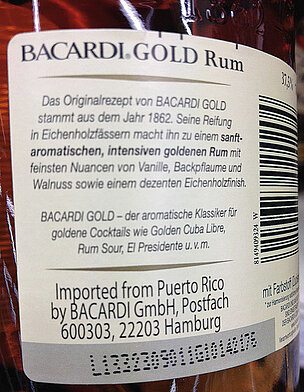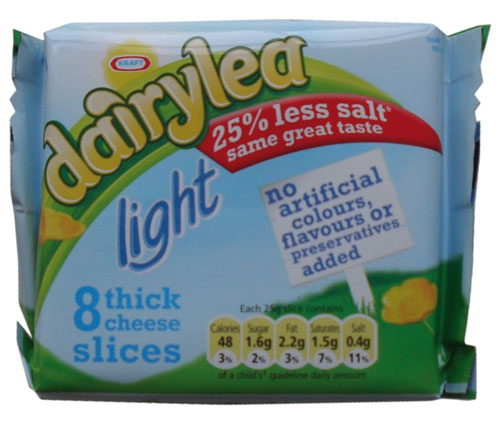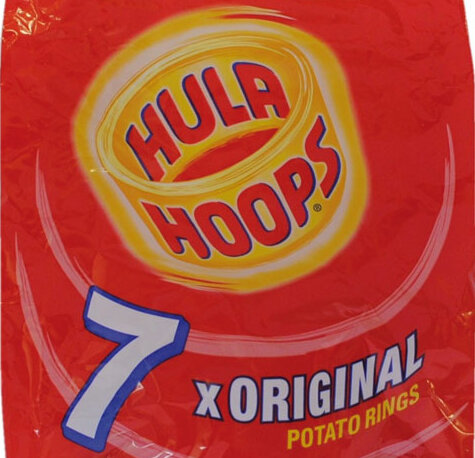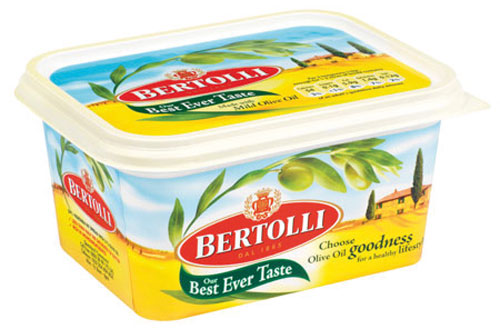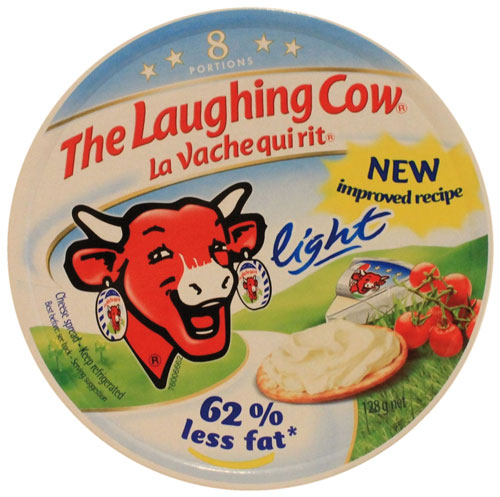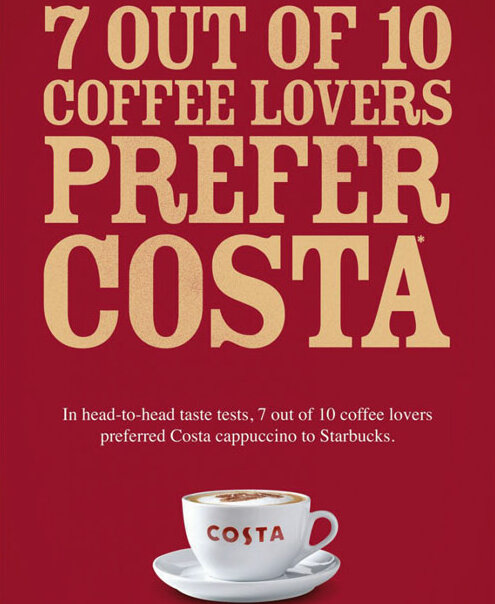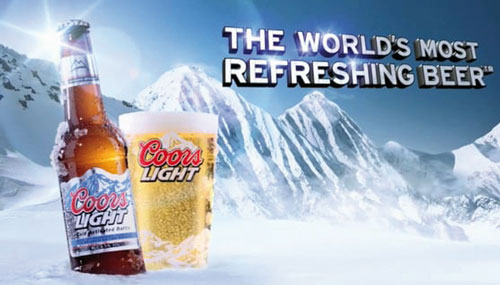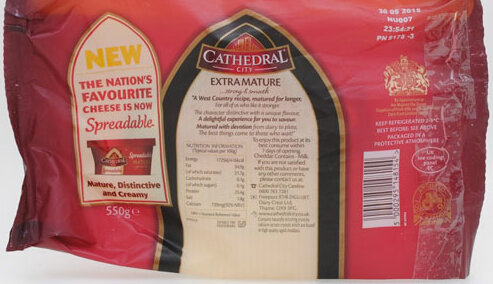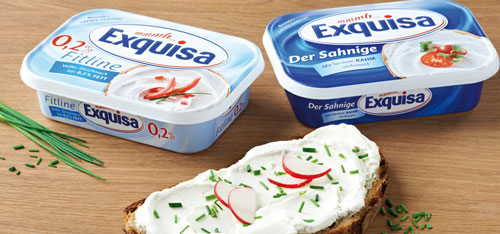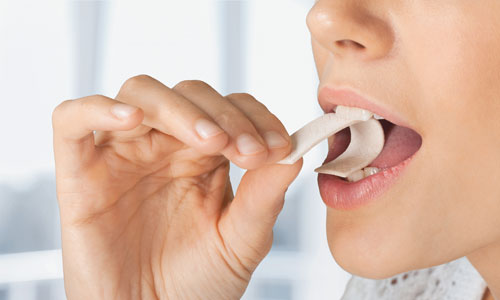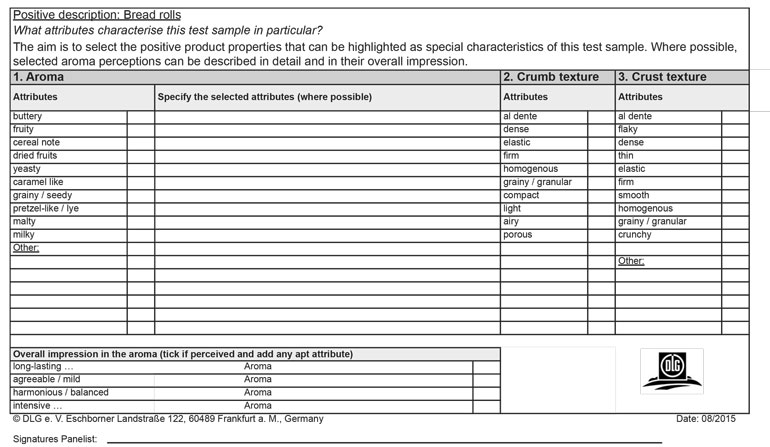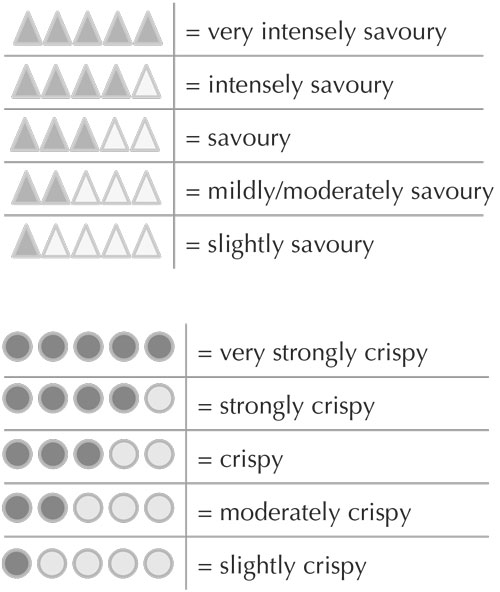Sensory Claims – Methodological approach to development and substantiation
DLG Expert report 15-2015
Author:
- Bianca Schneider-Häder, Elisabeth Hamacher, DLG e.V. - Competence Center Food Frankfurt/M., Germany, sensorik@DLG.org
- Cindy Beeren, Leatherhead Research, Leatherhead Surrey, England, cbeeren@LeatherheadFood.com
1. Introduction
In today’s competitive environment and in the light of continuously rising consumer expectations, it is becoming increasingly more important for producers to describe their products fittingly in order to highlight their merits by comparison with competitors’ products and to boost sales. It is crucial for success to focus on certain particularly outstanding characteristic value-adding quality aspects of the food. Statutory regulations such as the Health Claims Regulation or the Food Information for Consumers Regulation are increasingly limiting companies’ scope for communication. Most sensory claims, on the other hand, are not subject to extensive regulated usage. They thus unlock new opportunities for producers that are now standard practice in the USA and in some European countries.
The following expert knowledge, based partly on results of the authors’ own research projects, aims to answer the following questions:
- What kinds of sensory claims are there?
- What opportunities for developing sensory claims are offered by the sensory testing methods used for foods?
- How can the right wording be found so that consumers and product experts understand the sensory product properties defined in the same way?
- What are the critical success factors for “sensory claims”, and what experience exists in other European countries?
2. Definition and meaning
A “claim” is defined as a form of communicating product properties that consumers perceive as credible facts. “Sensory claims” are statements about sensory perceptions and product characteristics concerning taste, texture, appearance, aroma or sound, communicated by the producer to advertise the product. These include descriptions such as “now with even fruitier taste”, “with even longer-lasting peppermint aroma”, or “creamy enjoyment” in the case of statements about texture. Sensory claims thus give sensory testers, product developers, marketing specialists and PR experts many and diverse opportunities to positively characterise their products in sensory terms and position them accordingly on the market. Nowadays these claims can now be found ever more frequently on product packaging, labels, and in advertising in the media in the food and beverage industry.
The designation “sensory claims” derives from the regulated “health claims” that are used to describe nutrient and health-related data on foods. As a result of the legal regulations governing health claims, producers in the food industry are increasingly using the option of promoting products on the basis of sensory characterisations, as these are not yet subject to detailed statutory regulation in Europe.
However, all claims must be technically substantiated, demonstrable and verifiable in order not to mislead consumers.
As shown in the following brief overview, studies confirm that consumers can identify with sensory claims in product advertising as well as quality labelling and be guided by the information. Consumers thus learn new things about their own taste preferences, leading to an increase in purchase and product satisfactory levels. Such qualitative distinguishing on the basis of sensory claims can accentuate the identity and provide a special feature of specific products.
A study of shopping behaviour by Swahn et al.(2012) documents that product labels with sensory descriptions can influence product selection by consumers. The study focused on three different apple varieties that were promoted using different marketing strategies and labelling. It was ascertained that if only the name of the apple variety was stated, consumers made a different choice than in cases where a sensory description was added.
In a comparable study Mueller et al. (2010) found that providing different information on wine bottle labels, including the addition of sensory associations, had a positive influence on consumer decision making.
According to Christine Brugger, Sensory Scientist, Aroma/Reich, Zürich, Switzerland (2014), the increasing diversity on supermarket shelves calls for greater qualitative differentiation. Sensory claims in the form of a fact-oriented, emotional approach could help here, and furthermore give products a stronger identification or identity and consequently contribute to more positive shopping behaviour. Sensory claims work well when producers and trading companies sort product categories (e.g. apple varieties) into taste groups that are optically marked by banners and thus offer consumers guidance during shopping. According to studies, consumers also appreciate further product or recipe recommendations matching the selected taste category in sensory terms as an added service. Sensory claims or sensory characterisation of the products and communication of sensory quality criteria extending beyond the pure basic taste (sweet, sour etc.), such as e.g. texture (crispy, mealy) and aroma (fruity, green), coupled with sample tasting of apples at the point of sale, can help consumers to expand their knowledge about the sensory properties of the apple varieties and compare this information with their own taste preferences. New identification with the product achieved in this way can help to influence shopping behaviour positively and make it possible to offer the “right” apple variety in the “right” sensory quality at the “right” time to the matching consumers.
Andrea Jonsson, Research Scientist, Sensory and Consumer Research, Arla Foods, Stockholm (2014) points out that one special challenge for producers is to find the right sensory product description (fingerprint) for a product and to communicate it in such a way that consumers find it useful, attractive and trust-inspiring. Experience gained with the sensory characterisation and promotion of cheese demonstrates that the identification of the descriptive words is crucial for success. According to her findings, the terms are to be selected such that they match the essential sensory product properties, meet the requirements of consumer communication in the context of the firm’s own branding, and at the same time are comprehensible for consumers. Furthermore, on consuming the product it must be possible to identify with the sensory perceptions described, and the terms should satisfy consumer expectations regarding sensory quality features, as otherwise there will be no repeat purchases and no market success.
According to Georgia Taylor, Claims Manager at Leatherhead Food Research, England, many producers are reviewing their options in connection with claims on packaging. They then frequently come out in favour of statements regarding the sensory quality rather than for statements regarding the health value, which are subject to extensive legal regulations and for which costly and complex scientific studies need to be conducted. Moreover sensory claims are frequently more consumer-friendly, easier to understand and directly transparent on consumption.
Hanni Rützler, Scientist and Trend Researcher, Vienna, Austria (Spiegel Online 2/2015), advocates conscious tasting and “training the palate” when consuming foods. This helps consumers to reflect themselves and to gradually develop connoisseur skills. The accompanying zest for enjoyment also adds extra quality. For this it is necessary for consumers to train or develop stronger sensory skills regarding both taste and aroma identification and perception and description of these in everyday language, such as already exists in the wine sector. Today, consumers focus on questions about the origin of the raw materials and the processing of the products. However they are often at a loss as soon as they are asked to describe what something tastes like. According to Hanni Rützler, taste comes off poorly in all our debates on food and nutrition. Changing this represents a key challenge. Sensory claims could make a contribution here as well.
3. Guides and Standards
As already stated, there are generally no specific statutory regulations for sensory claims, such as exist in the field of health claims. However there are country-specific rules that either concern labelling in general, or the field of sensory claims too. Anyone dealing with the subject of sensory claims should therefore obtain legal advice before drafting the claims, as well as before communicating the claims, or integrate such advice into the project right from the start.
In the USA, where the trend towards sensory claims has already been taken up enthusiastically, ASTM International has issued a “Standard Guide for Sensory Claim Substantiation” (ASTM, E-1958-12). Although this has been written for the US market and the case law there, it can also provide valuable assistance in drafting sensory claims in countries outside America. The following pages also incorporate the recommendations of the ASTM. ASTM E-1958-12 defines various types of sensory claims and describes, for instance, diverse sensory testing methods and ways of designing, implementing, validating and verifying sensory claims. Primarily these are descriptive sensory analyses with the participation of experts and consumer panels, as well as technical and instrumental laboratory analysis methods. The guide also points out that the test design should focus on pre-defined product features (not on the complete product) and must supply claim substantiation, which can subsequently be used in marketing to advertise and promote the products. After all, sensory claims can only contribute to positive product profiling on the market if sensory tests are performed soundly and the results are transparent and can be communicated aptly.
Relevant European legislation states that one must not mislead consumers and requires labelling, advertising and presentation of the food must not be such that it could mislead a purchaser to a material degree, particularly by suggesting the food possesses special characteristics when in fact all similar foods possess such characteristics.
European regulations also prohibits unfair commercial practices that include misleading actions which could be false information or overall presentation that deceives the average consumer such that the average consumer would make a transactional decision that they would not have taken otherwise. The ‘average consumer test’ was developed under food law in 1998 for determining whether a practice is misleading. It takes into account all circumstances and the presumed expectations evoked in an average consumer who is: “Reasonably well-informed, reasonably observant and circumspect taking into account social, cultural and linguistic factors”.
In line with the European regulations, laws in Germany state that the following requirements must be taken into consideration in the development and above all in the use of sensory claims. These focus in particular on the regulations against misleading advertising in Article 11 of the German Food and Feed Code (German acronym LFGB), which state that foods may not be advertised or marketed with misleading designations, data, claims and presentations (LFGB, Sippel & Liebmann, 2014).
Sensory claims are already used frequently in the United Kingdom. The approaches to developing sensory descriptions generally also follow the recommendations of the ASTM document. Moreover for some possible product characteristics the Food Standards Agency (FSA) has compiled a guide with “Criteria for the use of the terms fresh, pure, natural etc. in Food Labelling” (2008). This includes, for instance, the following terms:
- “Fresh”
- “Natural”
- “Pure”
- “Traditional”
- “Original”
- “Authentic”, “Real” and “Genuine”
- “Home made”
- “Farmhouse” …“ (e.g. farmhouse bread)
- “Farmhouse Pâté”
- “Hand-made”
- “Premium”, “Finest”, “Quality” and “Best”
In the UK the Advertising Standards Agency (ASA) evaluates sensory claims under the Advertising Code of Practice. In this connection the ASA examines and considers how the consumer is likely to understand the “advertising message”, for example,
- addressee of the advertising message,
- whether the claim is absolute or conditional,
- the context in which the claim is made,
- photos, visuals, voiceover and sound,
- any on-screen text or small print.
The claims are evaluated by the ASA staff in Britain in the light of the following evidence standards.
Evaluation of sensory claims focuses on whether these are “puffery” or “sensory /impressionistic claims; perceptible taste impressions”. The groups of “established and uncontroversial claims” and “new objective claims” relate more to products that bear regulated health/nutritional claims and must therefore comply with the regulations. Obvious exaggerations in advertising messages such as “Luxury never tasted this good” cannot generally be substantiated and could mislead consumers. Sensory impressionistic statements such as “the creamiest yoghurt by far”, on the other hand, require evidence in the form of results from consumer tests or other sensory studies.
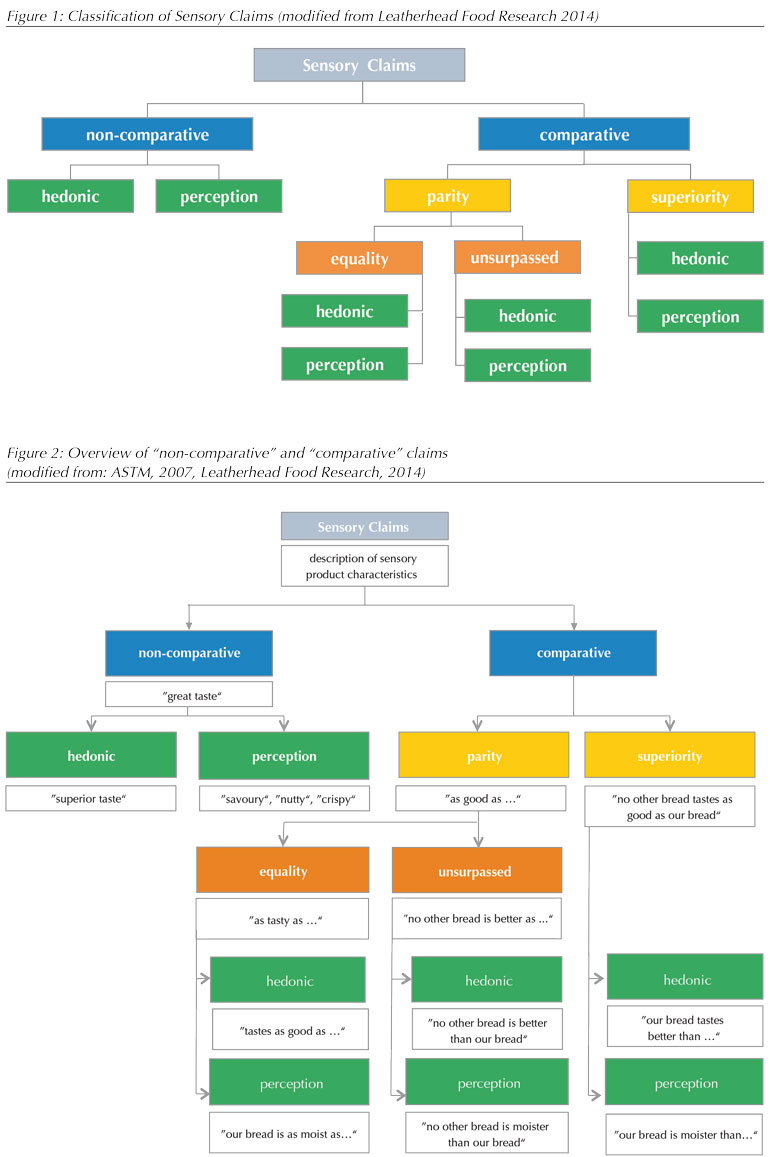
4. Classification and examples of statements
Sensory claims can generally be divided into two groups, “non-comparative” and “comparative” claims (ASTM E1958- 12, see Figure 1).
“Non-comparative” claims highlight certain sensory attributes of the product (such as taste, texture) without any comparison with another product, e.g. a competitor product or previous formulation (ASTM E-1958-12, Leatherhead Food Research, 2014). Examples of non-comparative claims in this connection would be “tastes great” or “intensely creamy”. Non-comparative claims can be further categorised as being either “hedonic” or “perception” claims. While hedonic claims relate to the liking/acceptability of products, for example “nice taste”, “perception” claims relate to the perceived attributes of the product, such as “refreshing”, “cool”, “crisp”, “fruity” etc. (Leatherhead Food Research, 2014).
By contrast with this, “comparative” claims make a comparison with another product, generally a competitor product or an earlier product version. “Comparative” claims can be further categorised as showing parity with another product (e.g. “tastes as good as the leading brand”) or superiority over another product (e.g. “no other product tastes as good as ours”). (Leatherhead Food Research, 2014)
“Parity” claims are divided into “equality” and “unsurpassed” claims. Both groups can in turn be subdivided into “hedonic” and “perception” claims. According to ASTM International, “equality” claims apply for products that are equal in one or more particular feature. A “hedonic” claim of the main group “equality” claims would for example be “tastes as good as …”, while an “equality” – “perception” claim would for example be “our cake is as moist as …”.
By contrast, “unsurpassed” claims apply for products that exceed the lower limit defining equality (Ennis, 2008). Here the product selected for comparison with the examined product is not better in some way. A “hedonic” claim of the main group “unsurpassed” claims would be for example “no other product is better than our product”, while an “unsurpassed”-“ perception” claim would be for instance “no other cake is moister than ours”. (ASTM E1958-12)
“Superiority” claims assert a higher sensory quality level or a better taste, aroma or texture in relation to another brand. “Superiority” claims are accordingly opposed to comparable brands or previous product versions. They can also be subdivided into “hedonic” and “perception” claims. A “hedonic” claim in the “superiority” claims group would for example be “our product tastes better than …”, while a “superiority”-“perception” claim would be “our cake is moister than …”. (ASTM E1958-12)
Figure 2 summarises the preceding remarks and shows examples of possible claims from the bakery sector.
A few examples of statements are set out below.
“Non-comparative” claims
Non-comparative claims can be used to communicate stand-out attributes of the product to increase the appeal to consumers. Example 1 shows a mint flavoured gum product marketed by Lotte. Included on the front of pack statement is a non-comparative perception claim highlighting the “sharp and refreshed taste” and “amazing long lasting flavour”. Both statements reflect the key attributes of what a gum product is expected to deliver, long-lasting mouth freshness, and therefore are important selling points.
In Example 2, Lorenz have incorporated the importance of crunchiness into the name of their ‘Crunchips’ product. To a large extent crunchiness is a taken-for-granted assumption (as soft or soggy crisps are usually a sign of staleness). Other sensory analysis techniques (such as descriptive analysis) correlated with consumer evaluation can isolate specific consumer drivers of liking (i.e. ‘if the product is even crunchier I will like it even more’) and use of sensory claims in this respect can be a useful tool to communicate to consumers.
Example 3 shows a different kind of non-comparative claims, for it focuses not only on the hedonic or perceptible (sensory) properties of the product, but also on the feeling triggered by the product when it is eaten, e.g. “comforting”. Similar descriptors are used throughout the entire product palette of ready meals, for instance “tender and full flavoured”, “rich and hearty”, and “tasty and tempting”. Each descriptor deliberately uses powerful, evocative language to create an image in the consumer’s mind of a warm, relaxing, comforting meal.
Example 4 shows mixed wheat bread from Lieken Brot- und Backwaren GmbH. The product packaging is labelled with the non-comparative claim “light and mild”. As this statement addresses properties that can be perceived in a sensory-analytical manner, this claim is classed as a perception claim in the group of non-comparative claims.
Example 5 shows a chocolate pudding with cream (Dany) from Danone that is advertised as “fluffy light cream topping with wonderfully soft melting pudding”. This example also shows a non-comparative perception claim, as no comparison with another product is made.
Example 6 shows the label on a bottle of Bacardi Rum. The product packaging makes the non-comparative claim “light, aromatic, intensely gold”. As this statement addresses properties that can be perceived in a sensory-analytical manner, the claim is classed as a perception claim in the group of non-comparative claims.
All the above products are examples of “non-comparative” claims (including both hedonic and perception claims). In each case they highlight key attributes of the product so that they stand out and appeal to consumers. Rather than bombarding consumers with a full sensory profile of the product, they focus instead on one or two key selling points. Doing this effectively requires an understanding of consumer needs and wants and the factors influencing the purchase decision-making process. For example, understanding that consumers buy gum products because they want a long-lasting fresh, minty mouth feel, or that they buy a ready-made cottage pie because they want a relaxing, comforting, homely meal experience. Clearly the examples above do not make references to other products; they do not state that their products are more savoury and comforting, or fresher and longer-lasting than others.
Comparative Claims
The situation is different with comparative claims. Various types of comparative claims can be made (see Fig. 1). The first type of comparative claims comprises the parity claims. As the name suggests, these place the product on a par with (but not better than) comparable products or an earlier product version or formulation. This form of claim can be quite powerful if a product has been reformulated to remove/reduce sugar, salt and fat or artificial additives and consumers thus expect a loss of flavour, colour etc.
The product in example 7 highlights this well. The bold “25% less salt” statement is immediately followed by the “same great taste” statement. The product in Example 8 repeats the “same great taste” message but highlights the absence of artificial flavours, colours and MSG. In both cases the underlying message to consumers is that the product is healthier without any compromise on taste.
Comparative claims are also frequently used to show superiority over another product. This might include a previous formulation as can be seen in Examples 9 and 10 with clear statements on the package such as “Our best ever taste” and “New improved recipe”.
Such claims inform consumers that the product is now better than it used to be, which might help to build brand loyalty and/or attract new consumers. However, whether the product is ‘better’ or ‘improved’ is somewhat subjective. There are many examples of products that have been reformulated, which are ‘better’ in the eyes of the manufacturer, only to find that consumers did not agree.
Indeed, this is often the case for brands which are consumed frequently, have very high levels of household penetration, and where consumer loyalty is very high. In such cases reformulations are sometimes better launched as range extensions. It is also important to note that where consumer acceptability studies are carried out, this is done with participants who are regular consumers of that product, not a generic panel.
In addition to the above examples, comparative claims are frequently used to show superiority over competitor products. It is somewhat of a misconception that comparative superiority claims cannot be made. Indeed, they are perfectly legal providing they adhere to advertising codes of practice in the respective country and do not mislead consumers. The claimant will have to consider the likelihood of challenge by the comparative and ensure sufficient substantiation of the claim is present to proof its validity.
Comparative superiority claims are generally much bolder and distinctive and attract a great deal more attention and scrutiny (from competitors in particular). Example 11 makes a very direct comparative superiority claim stating that “In head-to-head tests, 7 out of 10 coffee lovers preferred Costa cappuccino to Starbucks”. Unsurprisingly, the advert was challenged by Starbucks; however, the challenge was not upheld by the Advertising Standards Agency and the advert continued to run.
5. Methods of developing and checking sensory claims
As described above, the “Standard Guide for Sensory Claim Substantiation E1958 – 12” has been published by ASTM International in the USA and recommends various methodological approaches for sensory validation of sensory claims. It presents a sound sensory test design for identifying and verifying sensory claims and then, based on technically correct substantiation, communicating them to consumers as positive product attributes, both on the packing and in promotional communication work. Essentially, the guide also shows detailed methodological procedures for determining sensory data from descriptive and/or discriminative analyses and consumer testing.
For instance the ASTM recommendation describes that for the success of the claim it is crucial to first define in the test design if the focus lies on a monadic or on an comparison test and what product attribute is to be examined and highlighted. In this connection it might also be helpful to conduct preliminary tests with expert and/or consumer panels in order to find out the essential product properties that are relevant for the target group and how to describe them. After this and in general, the claim is to be defined prior to the actual tests and is then to be reviewed in the course of testing, using product tastings and corresponding sensory panels (experts and/or consumers), and where appropriate substantiated by the results of chemical/physical analyses. After all, even if sensory claims are not regulated by law to date, it is particularly true that they are only successful if the claimed sensory quality aspects are reliable and transparent and do not disappoint consumer expectations.
In addition to this, alongside the sensory methods, identifying the apt terms to describe the sensory impression plays a key role. The testers often find it difficult to describe their sensory impressions fittingly. Moreover these sensory descriptors must be understood both by the sensory experts and by consumers. The latter in particular are guided by the product descriptions on the packing when selecting products from the supermarket shelf. These are challenges that not only the food trade, but also other industries such as the cosmetics and tobacco industries will have to tackle. The following remarks show examples of the possible methodological approaches. They are informed by the recommendations of the ASTM Guide, but also incorporate results and experience from our own projects.
5.1 Methodological overview
Generally speaking, three different method options are available for substantiating sensory claims: consumer tests (untrained panellists, product users), expert tests (panellists selected, screened and trained in sensory testing, and may be product users) and chemical-physical laboratory analyses. It is recommended that two of these three options be used to ensure clear evidence for using a claim and so that it can be substantiated with the data surveyed. Figure 3 provides an overview of: methods for developing and substantiating sensory claims.
It is important for all of the methods described below that an appropriate test design complying with the principles of “Good sensory laboratory practice” and the rules of general project managements be created. This comprises targeted selection of the methodology and consequently matching statistics, professional sample management, selection and preparation of a suitable test room/location, as well as recruiting and training or briefing the panel of testers.
With regard to analysing the data, it is essential to assure the reliability and validity of the results, for example by following appropriate norms and standards or Best Practice Guidelines. Alongside the methods/statistics and the panel of testers, other aspects of the test design such as sample management and the test environment need to be defined. However, the general requirements made of sensory testing apply here. For instance when comparing the product with competitor products, the on-pack preparation instructions should be followed precisely. Sampling should be conducted at the point-of-sale in order to imitate the act of purchasing and ensure that a variety of batches is obtained.
Moreover when purchasing comparable products, these should – as far as possible – be purchased from the same store and the shelf lives of the products should be comparable too. The product form (e.g. powder vs. ready-made product) as well as the packaging size and format (e.g. glass bottle vs. PET bottle vs. can) should also be taken into account. Furthermore, the sample storage conditions should be similar and suitable for all products, but comparable to those consumers are expected to use. Ideally the samples should be presented in neutralised or blinded form so that the producer/brand cannot be identified. Although the majority of consumer tests are (currently) conducted in sensory testing laboratories, depending on the nature of the product and the questions asked it may also be expedient to conduct in-house tests (for instance for pre-packaged foods), store tests or street tests (e.g. for on-the-go products). All of these product-related aspects should be considered ahead of the test design in order to obtain informative results.
For laboratory analyses, the respective methods and laboratory equipment suitable for the test attribute to be examined should be selected, calibrated and used.
5.2 Consumer tests data
Data from consumer tests offer a wide range of opportunities for developing, supporting and securing sensory claims. For example, preference tests can be used to substantiate a comparative superiority claim and identify statements such as “seven out of ten consumers prefer product x to product y” (see Example 11, Costa Coffee). Preference tests can also be especially helpful in the case of products that have been reformulated, e.g. “ … now with improved formula” (see Examples 9, Olive Oil Spread, and 10, Cheese Triangles). In these cases, however, it is advisable to use the same consumer panel for the primary test with the original product and the subsequent test with the new product. Furthermore, data from market research or sales statistics can help to substantiate sensory claims. Example 13, Cathedral City “The Nation’s Favourite Cheddar” shown in Chapter 4 uses sales statistics for a period of over 52 weeks confirming that the cheddar was a top-selling brand in its promotional flyers and TV advertising to back up this comparative superiority claim.
Fast sensory methods, such as “Check All That Apply” (CATA) are also frequently used to develop the sensory attributes (descriptors) of the product and substantiate sensory claims. For example, supporting the sensory tasting by consumer panels with a list of descriptors and a checklist describing the product in sensory terms (such as “juicy”, ”creamy”, “fruity” …) can relatively quickly and easily generate homogenous statements in the form of frequency distributions in the attribute selection and elicit statistically significant data for substantiating and backing up sensory claims.
When working with consumer data, certain framework conditions and guidelines should be taken into account to secure the reliability and validity of the results. As far as possible the panel profile should reflect socio-demographic data and product-specific consumer habits. It should be noted that consumer surveys are subjective in nature and a section of the general population may not be representative of the target market (Leatherhead Food Research, 2014). The way in which data are collected and its respective test location also need to be defined when developing a suitable test design. Distinctions are made here between “Central Location Testing (CLT)”- and “Home Use Testing (HUT)”. (ASTM, 2012)
5.3 Trained panel data
Trained panellists are used to find an objectively measurable statement about the product attributes and thus back up the sensory claim selected.
A trained panel could be used in the same way as analytical and laboratory methods to determine or compare sensory attributes in the field of texture, aroma or flavour. This would thus support the development of both comparative and non-comparative claims. For example, if the product has been reformulated to have a creamier taste, a trained panel could compare the previous formulation with the new formulation and provide an objective comparison of whether the product really is “creamier” in taste or not. A similar approach could be used to compare it with competitor products. Trained panellists are also able to develop descriptive vocabulary such as tangy, zesty, refreshing etc. which can be used to support non-comparative claims. Alongside the traditional discrimination testing with for example “triangle tests”, “paired comparison tests” or “duo-trio tests”, descriptive testing in the form of “simple descriptive tests” to characterise the sensory attributes of foods and more comprehensive sensory profile analyses are often used as well. In addition, temporal methods such as „Time Intensity Profiling”, “Temporal Dominance of Sensations (TDS)”, “Temporal Check All That Apply (t-CATA)” or “Progressive Profiling” can be used to analyse and monitor the sensory attributes of the product over time. This can be relevant, for example, for the product freshness or for the minty taste of chewing gum, in other words in products such as those in Example 1 “Fit´s Link Gum by Lotte”, where it can be important in both comparative and non-comparative claims to substantiate the claim to “long-lasting flavour” through results of studies.
A trained panel can also take on the role of experts and jury deployed in quality tests, e.g. to support superiority claims such as “premium vodka voted to have the best taste profile as judged by expert taste panel” or “voted best … by …” (e.g. World Beer Cup; International Beer Challenge, Dairy Product Contest). This offers producers an opportunity to consolidate or enhance their product’s premium position in the market. Independent third-party testing and verification is an especially powerful tool for building consumer trust and acceptance.
However, it should be considered when using expert panels and trained panellists that they cannot and need not necessarily reflect product acceptance by consumers. They are therefore assigned primarily for “perception” claims.
Trained panels can admittedly differentiate and provide objective measuring results regarding the product creaminess and thus distinguish between products. However, they cannot make any statement on whether the enriched creaminess is the sensory attribute desired and preferred by consumers for the product in question. Moreover trained panellists might focus more on different assessment criteria (e.g. new aroma substances) than consumers, who may want greater purity and naturalness of the ingredients instead. Ideally, therefore, results from expert tests should be combined with data from consumer acceptance tests and then evaluated.
5.4 Data from laboratory analyses
Some sensory product properties, such as texture, can also be measured well using laboratory equipment. This possibility would apply for instance for Example 2 in Chapter 4, for the product “Lorenz Crunchips”. Crunchiness is a sensory attribute that can be measured very precisely with equipment such as a texture analyser. Depending on the quality of the results, data obtained in this way are ideal for formulating and substantiating sensory claims such as “crunchier than…” “now even crunchier…”, or “the crunchiest…”. Technical laboratory equipment also provides excellent flanking support in the field of viscosity measurements, e.g. to determine the “softness”.
Texture is frequently a key quality indicator in various products. In fresh meat, tenderness and succulence are deciding parameters for consumers. Texture analysers make it possible to determine sensory parameters such as tenderness, stringiness, chewability, firmness, hardness, consistency and succulence in an objectively precise and reproducible manner.
Other sensory parameters among the test attributes taste, aroma, odour and appearance can also be measured objectively in isolation with the help of laboratory instruments. Alongside colorimeters, spectral photometers and electronic eyes for measuring colour intensity and appearance, gas chromatography and mass spectrometry as well as electronic noses on the basis of sensors, gas chromatographs, ion mobility spectrometers and the like are frequently used to measure aromas or odours.
The high degree of objectivity of laboratory analytics using technical instruments makes them a further valuable tool for securing and substantiating sensory claims. This is because the test results can be presented in objectively measurable figures and – provided the equipment is properly calibrated and used – can be evaluated reliably and reproducibly. Claims such as “crunchier than ...” can thus be irrefutably proven.
However, the same applies for data from laboratory (instruments) analysis as for the data from trained panels – these results do not provide any indication of consumer product acceptance and perception. For example, if laboratory analyses show that the crunchiness of a biscuit is greater than that of the market leader product, consumer tests may say that the level of crunchiness is too intense and thus undesirable. Consequently the sensory claim with this formulation might not lead to the targeted market success. Accordingly, laboratory analysis methods should not be used in isolation either, but instead always in a context with consumer testing.
6. Collecting product-descriptive attributes using sensory testing panels
As already mentioned, there are various ways of sourcing product-specific sensory attributes with which sensory claims can then be worded (Leatherhead Food Research, 2014). As stated in Chapter 3, these include descriptive sensory analysis methods for evaluating characterising product properties (ASTM, 2012). The descriptive testing methods – the simple descriptive test, the CATA method and the consensus profile method – are explained below.
6.1 Simple descriptive test
According to DIN standard DIN 109641, the simple descriptive test is a method for describing attributes on the basis of sensory perception (DIN Deutsches Institut for Normung e. V., 1985). Distinctions are made between appearance, odour, taste and consistency / texture / mouth feel attributes (Buchecker, 2008).
The simple descriptive test can be applied in many ways. In addition to use in product monitoring, it is suitable for example for training testers or as a basis for conducting profiling tests. The task of testers is to describe the samples presented for testing in fitting terms as regards their attributes. Depending on the specifications, the testers can choose attribute descriptors freely or select them from a predefined list. (DIN Deutsches Institut for Normung e. V., 1985)
In the simple descriptive test method, the attributes are not given a score rating in the form of intensity values, which is why this is also a qualitative analysis (Buchecker, 2008). Nor does the simple descriptive test include any subjective description of the sample to be characterised, such as e.g. “tastes good” (Derndorfer et al., 2012). The testers can describe the samples to be tested individually or jointly. The attributes selected are to be entered in an appropriate assessment form (DIN Deutsches Institut for Normung e. V., 1985).
At least three testers are necessary to conduct a simple descriptive test. It is irrelevant whether they are trained or untrained (Derndorfer, 2012), but an important prerequisite is that they must be able to describe sensory perceptions (DIN Deutsches Institut for Normung e.V., 1985). Training references can be used to illustrate the attributes (Rummel, 2002).
According to Rummel (2002), “using the simple descriptive test as an instrument to develop attributes […] is a practicable approach”.
6.2 CATA Method
The CATA (Check-All-That-Apply) method is one of the descriptive methods in sensory testing. It is referred to below as a “fast” descriptive method, as it bypasses time-consuming and cost-intensive implementation procedures. The CATA method concentrates on the sensory description of the product presented. It is thus one of the “verbal-based” methods2 of the fast descriptive methods (Valentin et al., 2012, Bongartz, 2013).
In the CATA method, the testers are given a list of attributes and are asked to tick (“check”) the relevant terms applying to the product(s) to be tested. In the course of the test the testers are allowed to select as many attributes as they consider to be apt and fitting for the description of the sample being tested. (Ares et al., 2010)The selection list can be evaluated in different ways. Either the consumers or testers can draw up their own list before starting, or the list is prepared by a group of non-participant consumers. In addition the attributes can be sourced by a trained panel. (Dooley et al., 2010)
No details regarding intensity are noted in the CATA method (Dooley et al., 2010). By contrast with descriptive analyses, hedonic concepts can be integrated into the list of terms by trained panels (Ares et al., 2010). The significance of the vocabulary options is measured by their frequency of use (Ares & Jaeger, 2013). Moreover a correspondence analysis (CA) of the “resulting frequency matrix“ can be conducted for evaluation purposes (Adams et al., 2007, Bongartz, 2013).
6.3 Consensus profile method
The investigation of profiles is defined in the German Standard DIN 10967. The sensory testing method distinguishes three different variants of profile testing: Conventional profiling, Consensus profile and Free choice profiling. The scope of application for investigation of profiles is broad. The method can be used e.g. for describing a product standard, for product comparisons, for product development and for product optimising (DIN Deutsches Institut for Normung e.V., 1999).
In the consensus profiling method (DIN 10967-2), products with valuable attributes are described and the intensity or magnitude of these attributes is determined and rated (DIN Deutsches Institut for Normung e. V., 2000). By contrast with conventional profiling, where the intensity is determined in the form of an individual test, in consensus profiling the panel holds a group discussion after the individual tests to reach a final result (DIN Deutsches Institut for Normung e. V., 1999).
There are several steps in establishing a consensus profile. First of all product-relevant vocabulary is developed (DIN Deutsches Institut for Normung e. V., 2000). Here the specifications of the DIN Standard 10964 on the “Simple descriptive test” can serve as a basis for developing and conducting such an evaluation of attributes (DIN Deutsches Institut for Normung e. V., 1985). In the next step, the tester group reduces the number of terms evaluated, for instance by combining similar terms or sorting out hedonic terms. A (defined) number of terms are then selected in the following step, for example attributes that have been listed several times (DIN Deutsches Institut for Normung e. V., 2000). One member of the panel is then appointed or a trained panel leader is used as a discussion leader in order to structure the group discussion and ensure active and constructive collaboration of all testers (Plaul & Schüssler, 2007).
The selected attributes are then assessed with regards to their perceptible intensity in the form of an individual test. The intensities of the individual specified attributes can be rated e.g. with the help of a number scale (interval scale) from 0 to 5 (6-stage) or from “not perceptible” to “very strongly perceptible” (DIN Deutsches Institut for Normung e. V., 2000).
Finally a group discussion is conducted to reach a consensus in developing a common attribute intensity profile. According to DIN 10967-2, the minimum number of testers on the panel […] depends on the aim and purpose of the test. However, in order to achieve a result that holds up to interpretation, at least six testers should take part in the test and give their scores. DIN 10967-2 also specifies that consensus profiling must be carried out by testers who have received sensory and product-specific training (DIN Deutsches Institut for Normung e. V., 2000).
6.4 Advantages and limitations of the test methods presented
A few advantages and limitations of the descriptive test methods selected – descriptive test with a positive list, CATA method and consensus profiling method – to evaluate positive attributes are set out and rated below.
As pointed out above, in the Simple descriptive test it is the task of the testers to describe the samples presented for testing as regards their attributes in fitting terms. Depending on the specifications, the testers can choose attribute descriptors freely or select them from a predefined list. The process can be facilitated and accelerated by providing an attribute list containing the sensory attributes of the product, but this need not in any way be complete. However it can serve to trigger a kind of “brainstorming” during the sensory testing of the product and represent a valuable aid in selecting and/or generating relevant sensory properties describing the respective product.
When identifying positive product features, the attributes identified in advance in a kind of Positive List enable the testers to pick out and/or modify the relevant product-specific attributes appropriately according to their sensory perceptions during the product tasting. In this way individual and very product-specific formulations of sensory descriptions can be drawn up. In order to conduct the Simple descriptive test, testers need a certain amount of experience and training in handling the verbal description of their sensory perceptions during the product tasting.
As explained above, the CATA method is often referred to as a “fast” descriptive method (Bongartz, 2013). It can be carried out quickly and easily and requires only a low level of instruction of the testers (Dooley et al., 2010). It can also incorporate hedonic terms (Ares & Jaeger, 2012). It is particularly suitable for collecting consumer judgements and thus for testing with untrained testers. As the terms to be evaluated in various ways have already been preselected (Dooley et al., 2010), the testers are restricted already up front in their choice of terms in this form of descriptive analysis. Within the framework of the CATA method, the selection list has to be worked out ahead of the test.
By comparison with other descriptive analysis methods, the CATA method stands out in particular through its simplicity for both the receiver of the data and the testers (Valentin et al., 2012). Moreover various studies have shown that the CATA method can produce results comparable with those achieved by descriptive methods using trained panels (Ares et al., 2010, Dooley et al., 2010).
A disadvantage found in connection with the CATA method is the free selection option in the form of Multiple Choice. Castura (2009) demonstrated here that the position of the terms in the selection list in the CATA method influences the selection frequency by untrained testers, and thus attributes should be randomised.
Using the Consensus profile test makes it possible to determine the magnitude and intensity of specific attributes (DIN Deutsches Institut for Normung e. V., 2000) and thus to develop product-specific characterisation. Moreover the results obtained can be ideally compared with results achieved by instrumental methods (e.g. texture analysis by texture analysers or identification of aroma intensities with the help of electronic noses or tongues) and substantiated. On top of this, comparing the intensity results of different products can serve to formulate sensory claims, such as for example “crispier than...”, or where products have been reformulated “now even more savoury”. However, the procedural effort required to prepare and conduct the profiling may be considered a disadvantage. After all, this is a multiple-stage process, from evaluating the terms to reaching a consensus via individual testing of intensities (DIN Deutsches Institut for Normung e.V., 2000). Furthermore, the testers must be given product-specific training to qualify as testers (DIN Deutsches Institut for Normung e. V., 2000).
Figure 5 summarises and compares the essential features of the three sensory testing methods selected.
7. Project example “Sensory Claims for Bakery Products”
7.1 Project objective
The objective of the research project was to show the methodology applied to develop sensory claims for bakery products by way of example. The aim was not to develop an individual sensory claim for a product, as this would involve taking legal advice – above all for the wording of the “advertising message”. Instead the project purpose was to devise assessment forms containing the most important positive descriptors of the product group and thus provide interested companies in the industry with a “tool” supporting the product-specific development of sensory claims.
7.2 Method
By analogy with the methodological approaches for developing and evaluating sensory claims suggested in the “Standard Guide for Sensory Claim Substantiation” published by ASTM International (American Society for Testing and Material), (ASTM, 2012), a corresponding test design to present the methodological development of sensory claims was created in this research project. Using “Simple descriptive tests” to DIN 10964 and a list of positive attributes for bread and bread rolls developed specially for this research project (referred to as the “original list”), the essential positive descriptors for the sensory characterisation were determined on the basis of selected bakery products with the help of a panel of experts and a panel of consumers. Specifically, the product groups comprised “Bread”, “Bread rolls” and “Dry flat bread”, and these were treated separately in the course of the project. The product spectrum of the bread products examined and described in sensory terms covered rye mixed grain bread and wholemeal bread, multigrain bread and toasting bread. The bread rolls analysed included wheat rolls, various multigrain rolls and lye rolls. The group of dry flat bread types covered crisp-breads and cracker breads. The aim here was to include the products that are purchased most by consumers as well as to cover the widest possible sensory bandwidth within the product groups tasted and described.
For each of the product groups “bread”, “bread rolls” and “dry flat bread”, the approach adopted by the project followed the flow chart set out in Figure 6 (page 16). Below this the procedures and the results of the analyses are shown for the sector “Bread rolls”.
Simple descriptive test
Following an examination of the theoretical principles and foundations, the test method selected was the simple descriptive test. This was conducted with a trained panel and a panel of consumers. For this purpose, test records were drafted for the trained panel and for the panel of consumers and a list of positive attributes (original list) relating to bread rolls was provided as an aid. The positive product descriptions of the bread rolls derived from the results of the simple descriptive testing by the panel of consumers and from the trained panel questioned after these were evaluated, compared and verified, partly with the assistance of further technical literature. This approach made it possible to select and focus on relevant positive descriptive terms for the sector of bread rolls and to incorporate them in assessment forms for further sensory inspections on the basis of the CATA method and the consensus profile method.
Panel of consumers
Students in the Master’s courses “Food Technology” and “Human Nutrition” together with staff of the Institute of Nutritional and Food Sciences at the University of Bonn were invited to join the panel of consumers for the simple descriptive test. With the help of a brief questionnaire, the consumption behaviour of this panel of consumers could be evaluated ahead of the tests. In addition to providing information on how often they consumed bread and bread rolls, the testers were asked to state what products they preferred and what factors guided their choice of product. The age, gender and profession of the test persons were also recorded.
Trained panel
To recruit a trained panel, a selection of DLG (German Agricultural Society) testers from the Bread and Bread Rolls sector were contacted and invited to take part in the simple descriptive test. On the grounds of their product-specific certification by the DLG Certification Unit and appointment as DLG Experts, it was assumed that this group possessed product-related abilities of verbal expression and product expertise, thus optimally predestining them for the planned test. The group of experts was involved in this research project in order to verify the analysed results of the consumer testers. The assessors on the trained panel were also asked to complete a brief questionnaire in advance of the test providing information on their age, gender, industry sector and professional activity over three stages.
7.3 Results and discussion
Following the analysis of the simple descriptive test and the associated compilation of the frequency distributions of the positive attributes stated relating to the “bread rolls”, the sensory descriptions presented were evaluated regarding their relevance for drawing up the assessment forms, as well as for their subsequent suitability for wording of sensory claims.
When developing the assessment forms, not only the attributes included in the original list provided, but also the attributes additionally stated by the assessors were taken into account and integrated into the form after consideration of their suitability. The research project was thus able to compile lists of attributes for the test features texture/haptics and aroma. The latter were classified as the essential and value-adding test features or sensory attributes with regard to decisions to buy and consume. Sensory attributes concerning appearance are evident for consumers at the point-of-sale, and it was considered that basic tastes could be taken for granted.
On the basis of these results, three variants (differing in their methodology) of assessment forms and descriptor lists for product-specific evaluation of positive attributes were developed for bread rolls. These are each suitable for specific fields of application in the bakery products sector and make it possible to develop individual sensory product descriptions and then, building on these, to create individual sensory claims.
Alongside the more comprehensive Positive List that can be used to support in-house generation of positive product descriptions, assessment forms were developed for use in the CATA consumer testing method, thus permitting fast and simple application of a descriptive analysis by a panel of consumers without specific prior sensory knowledge and skills. The assessment forms designed for the Consensus profile method (Investigation of profiles) to DIN 10967-2 are suitable for use by trained panels, for instance for compiling attribute intensities within the context of aroma or texture profiles (e.g. on product packaging), which then enable consumers to select products on the basis of their own intensity preferences.
As already described, all three variants are based on a descriptive test procedure to evaluate product-describing attributes, the results of which are suitable for wording sensory claims. Since a defined selection of attributes is used for both the CATA method and the Consensus profile method, there was progressive refining selection of the attributes in the course of determining the vocabulary to be used. Consequently the Positive List can contain terminology that was ruled out from use in the other two methods. The purpose of this approach was to map out an extensive vocabulary of relevant attributes with the Positive List and then, with the other two methods, to allow a focused selection of terms and a successively more individual and product-specific assessment of the bread rolls. To summarise, the following properties of the assessment forms can be highlighted.
Assessment form Positive List: a selection of positive attributes resulting from the panel surveys (consumer panel and trained panel) using an extensive original list (for bakery products in general) of relevant positive sensory descriptors, compiled in the form of an assessment form. This list of terms is suitable for product-specific generation of positive descriptions of bread rolls in and by bakeries. (See Figure 7)
Assessment form for the CATA method: assessment form developed from the Positive List for asking consumers / consumer panels about product-specific positive descriptions. (See Figure 8)
Assessment form for the Consensus profile method: assessment form developed from the Positive Lists that can be used for describing the intensities of specifically selected sensory attributes (positive descriptions) when working with trained panels. (See Figure 9)
The methodological approach to developing sensory claims shown by way of example for bakery products and the associated generation of the assessment forms presented shows how complex and significant the field of sensory description of product properties can be.
However, the product-specific development of sensory claims entails some challenges, above all regarding the selection of suitable attributes for the product description and the corresponding wording (Jonsson, 2014). This study focused on statements about product properties that can be perceived in a sensory fashion, but are not visible for consumers at the point of sale, especially in the case of pre-packaged foods, such as for instance aroma and texture features. These attributes should make the test product stand out by contrast with comparable products and in particular highlight its distinct and relevant characteristics. Furthermore, it should be considered when selecting appropriate attributes that these must be understandable and transparent for consumers, so that no false expectations are provoked (Jonsson, 2014, Sippel & Liebmann, 2014). Accordingly, the challenge for the research project was to filter essential test features and suitable attributes for characterising bread, bread rolls and dry flat bread from the stack of possible attributes.
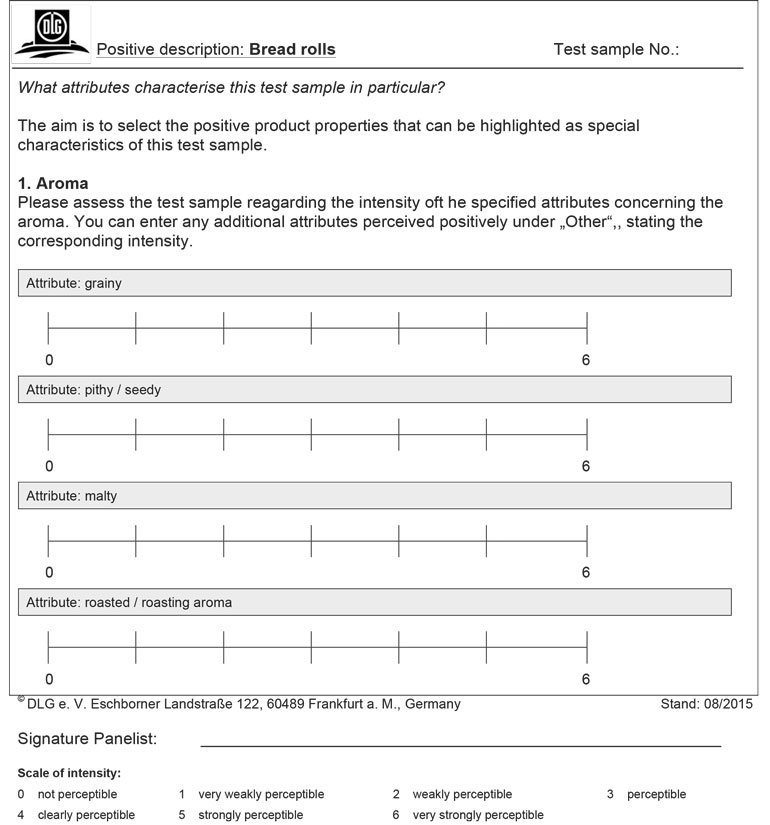
Scientific justification of the attribute description is also significant when developing sensory claims, as this is the only way to ensure qualitative distinction and singling out from the rest of the market through product communication and labelling (ASTM, 2007, Schneider-Häder, 2014).
This research work is based on a scientific approach, guided in developing and creating the test design applied by the ASTM International Guide. As described, a panel without sensory training (consumers) and a trained panel (experts) were involved in developing the various test methods and assessment forms and evaluating relevant attributes for positive descriptions of bread and bread rolls. The aim was not to draw up a product-specific attribute description, but instead to create forms with a suitable selection of terms that can serve to evaluate product-specific attributes for the respective product group and be used as a basis for wording product-specific sensory claims. With the help of the two panels, the pool of possible descriptive words was trimmed down successively to the relevant and practicable positive attributes.
Furthermore it became apparent that producing a feasible vocabulary and evaluating the relevant terms for describing bread and bread rolls involved a certain amount of time and planning effort. Many companies in the food industry have to cope with pressure on time and resources, which is why it is difficult to integrate descriptive analysis methods into the production and development process (Ares & Jaeger, 2013). Preliminary work through the use of comprehensive sensory descriptions (original lists), serving for brainstorming sessions too, could offer valuable support by the Lexicon of Sensory descriptors developed by DLG experts (Fachvokabular Sensorik, DLG-Ausschuss Sensorik, www.dlg-verlag.de/shop/ product_info.php?products_id=2825).
Accordingly all three variants of the assessment forms are suitable for use in the context of evaluating positive descriptive attributes in companies. With a more comprehensive Positive List, it is possible to make a start (brainstorming) on evaluating the product-specific attributes applying to the respective product. Defined initial screening is carried out already through the selective choice of attributes and their inclusion in the CATA method and the Consensus profile method, and the number of attributes to be evaluated is thus limited.
With the form for the CATA method, in-company consumer tests can be carried out with questions on the characterisation of product innovations and to find out how far product reformulations (e.g. leaving out certain additives etc.) are perceived by consumers.
The forms for producing a consensus profile are particularly suitable for drawing up product-specific intensity properties and thus a kind of aroma or texture profile in the form of symbol series for depicting on the product. Such a representation could be used in the bakery products sector to illustrate aroma and texture intensities. Examples of such profiles are shown in Figures 10 and 11. This information enables consumers to choose products more selectively on the basis of their own sensory taste preferences. Moreover communicating specific intensity ratings allows a form of product classification regarding desired attributes within a product group. This in turn makes it possible to produce variety profiles within which characteristics of a certain variety can be shown. Such variety profiles have already been developed for apples (Brugger, 2012) and for potatoes (Buchecker et al., 2011).
Furthermore the method presented and practised in this research project for evaluating suitable positive descriptive attributes can serve on a cross-industry basis as an example and guide to companies seeking to develop their own terminology and to consolidate, select and specify this in the course of further test processes.
8. Summary and outlook
As demonstrated above, sensory claims offer a good alternative to health claims in the field of product profiling for communication and marketing and they thus provide advantages for both consumers and producers. In particular “non-comparative” sensory claims with sensory descriptions tailored to the product give consumers valuable information concerning the positive sensory product profile to be expected on consumption, above all regarding texture and haptics, aroma and taste, thus facilitating their decision on buying. “Comparative” sensory claims, on the other hand, advertise with statements about the product advantages by comparison with earlier formulations or competitor products. It is essential to conduct sensory studies and tests in both sectors in order to substantiate the Figure 10: Aroma profile “savoury” Figure 11: Texture profile “crispy” = very strongly crispy = strongly crispy = crispy = moderately crispy = slightly crispy = very intensely savoury = intensely savoury = savoury = mildly/moderately savoury = slightly savoury = very strongly crispy = strongly crispy = crispy = moderately crispy = slightly crispy = very intensely savoury = intensely savoury = savoury = mildly/moderately savoury = slightly savoury DLG-Expert report 15/2015: Sensory Claims - 20 - statements made, not least in order to avoid disappointing consumers through misleading information or inaccurate sensory expectations and promises. After all, this would be counterproductive for the original goal of boosting sales.
Use of the sensory methods for developing and successively focusing on the relevant positive product properties described above and based on the recommendations of the ASTM International “Standard Guide for Sensory Claim Substantiation” (ASTM, E-1958-12) as well as on the authors’ own research projects can be a practicable approach here. However in the context of sensory claims it is always recommended that legal advice be obtained for final legal safeguarding of all advertising messages communicated. Observing and co-designing further developments in the “sensory claims” sector, which is still relatively new in Europe, will remain interesting and challenging.
Literature:
The extensive reference list can be requested from the authors.
1 The specifications for the “Simple descriptive test” to DIN 10964 were updated in the course of creating the research project on which the remarks are based. Accordingly this study is based on the specifications of DIN 10964-1985-06 and not those of DIN 10964-2014-11 (DIN Deutsches Institut für Normung e. V., 2014)
2 Methods that focus on the description with words. By comparison with “similarity-based” methods that address differences and similarities, and “reference-based” methods that are supported by references. (Bongartz, 2013)

